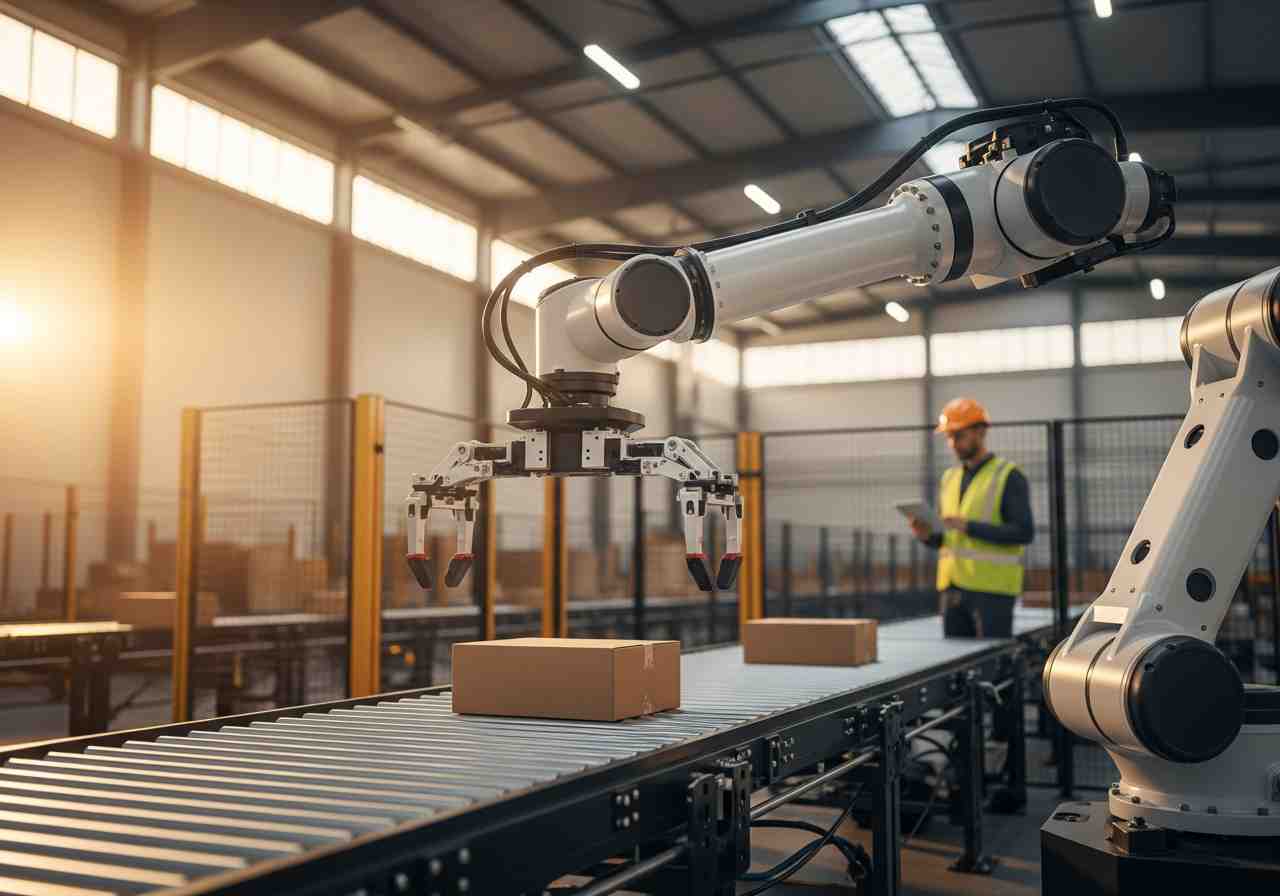China’s Robot Revolution: New Machines Changing Daily Life
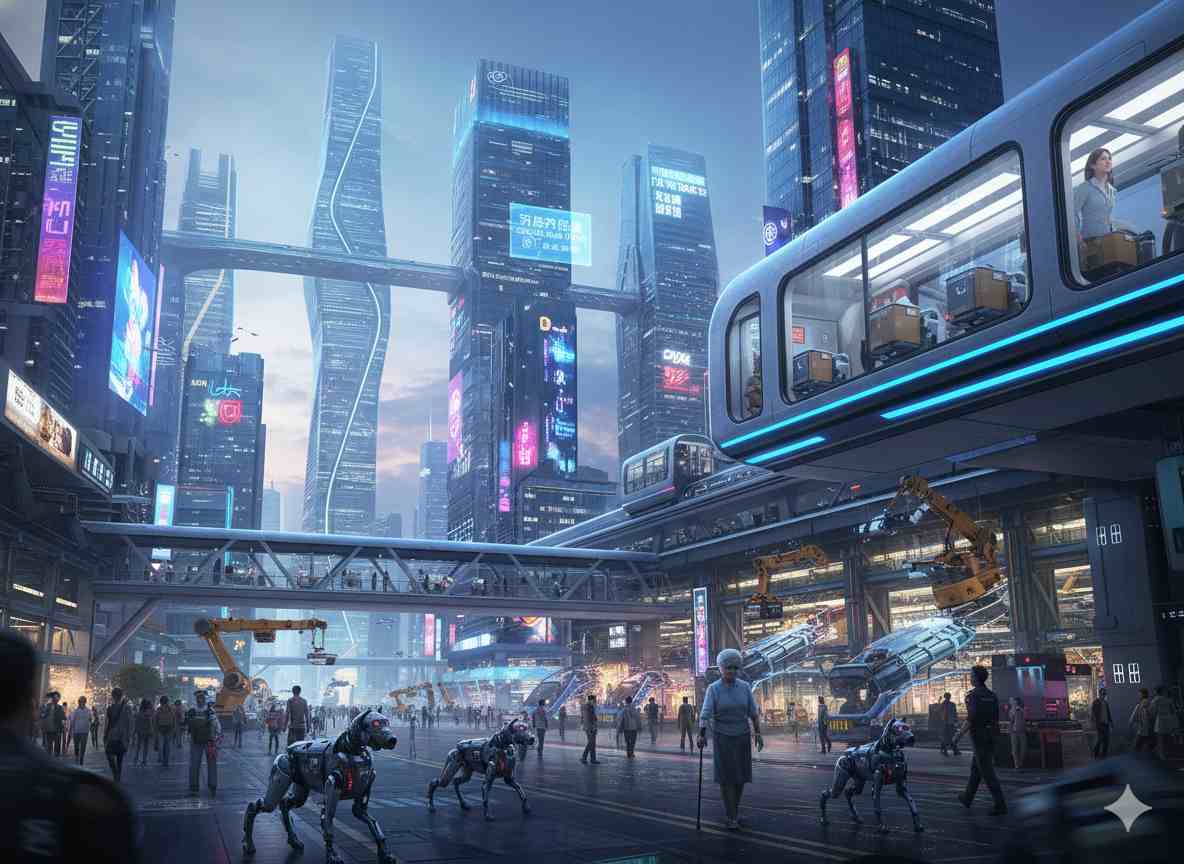
The city of Shenzhen, China, can be described as the city of tomorrow. This is due to innovative robots and superhuman AI technology are becoming an order of the day. What appeared as science fiction yesterday is taking place today. China is pushing the boundaries of machine labor to the point of carrying out friendly courier duties in the subway to caring of the aged by robots. This post discusses the newest robot inventions emerging in China and how it is transforming the industries and the house alike.
Friendly Robots Delivering in the Subway
Consider robots that are giving packages straight to the subway. This has become reality in Shenzhen. The Shenzhen Metro Group and VX Logistics courier robots operate in the subway. They do not appear as machine-like but as amiable cartoon figures. These robots enter trains, get off at the right stations and carry goods to the 7-Eleven shops within the subway system. They use no congested foot pavements and staircases making delivery smooth and fast.
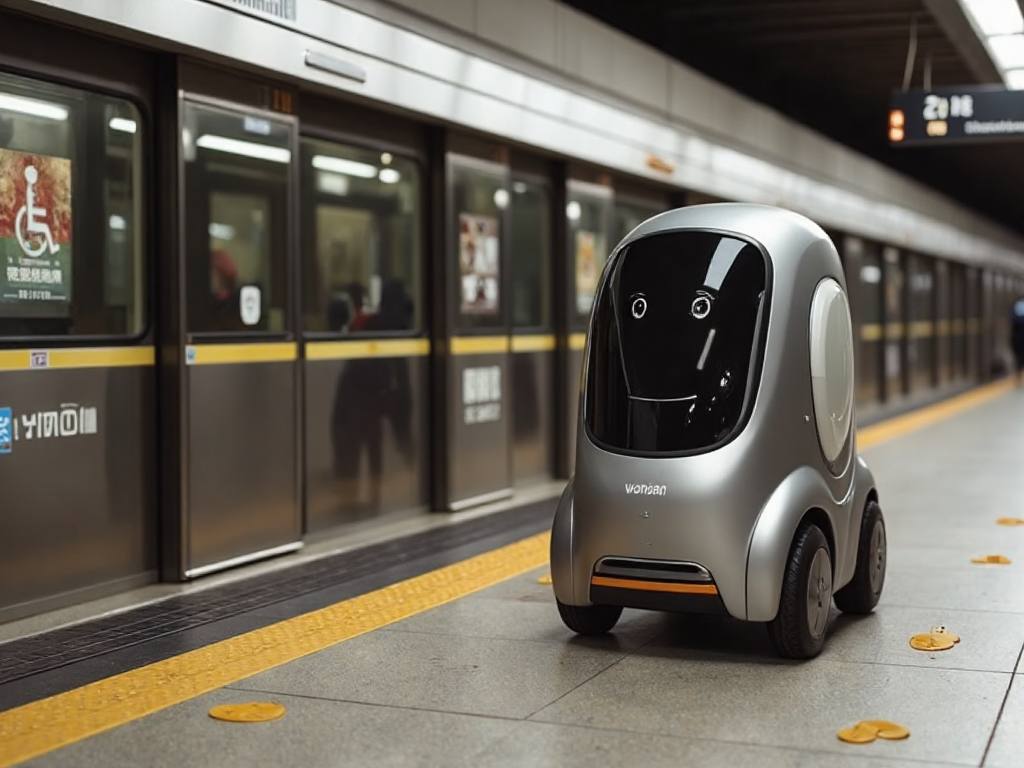
Every courier robot possesses a smart navigation system that has numerous sensors. An AI plans its routes. These robots are able to identify individuals, doors and escalators. They steer clear of collisions and acclimatize themselves to the number of travelling passengers. These bots are used in over 100 Metro 7-Elevens in Shenzhen with 41 bots. They pass through the dayly subway traffic with the nine million passing traffic. A single AI is in control of all the orders, and it routes the picking according to train space, station traffic, and urgency of a delivery. This gives an entire logistics system embedded within the public transport.
Robots Helping Kids Learn and Grow
China is not an exception, as it is also employing robots to assist in raising children. A small learning robot named Keeko was introduced in thousands of kindergartens. Keeko resembles a smiling marshmallow on tracks being set to move freely in the classroom. It is approximately 16 inches or 40 centimeters high. This turns this into one that is not fearful to children.
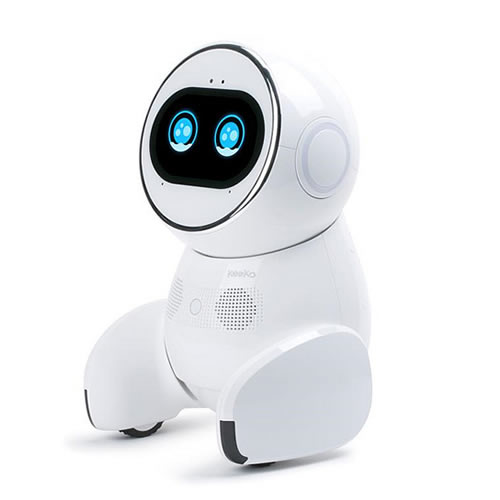
Keeko has a camera where he pays attention to children and responds to their movements. Its in-house AI modifies lessons according to the level of skills of the group. Teachers make use of Keeko to assist in teaching. It poses questions, conducts classroom games, reads stories or sings and even makes jokes. Keeko makes learning fun. It is intended to bring up a generation of people who are no longer afraid of robots. Children are taught in advance that robots should be useful, safe and even cute.
The Military Robot Dogs: Q-UGV Wolf
Precinctive robots are not always cute or friendly. The Q-UGV Wolf is an effective war machine. It had been on display in the 2024 Zhuhai Air Show. China south industries group constructed this robot dog which weighs 54 pounds or 70 kilograms. It is also running on other surfaces and is able to ascend sloping ladders. Q-UGV Wolf can be commanded to sit or move.
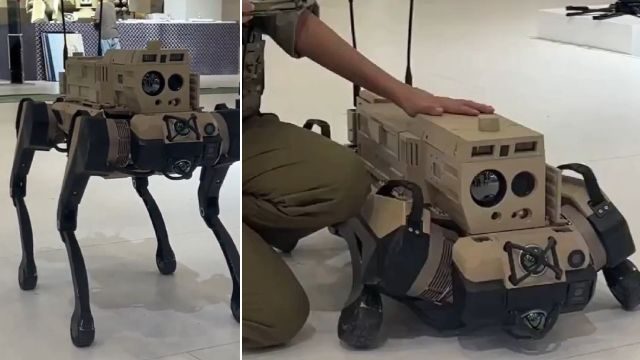
When exercising, the unmanned ground vehicles operate in four-packs. Each robot has a specific job:
- Scout: New routes and information collection.
- Stormtrooper: Leads attacks.
- Carrier: Conveyance of supplies.
- Sapper: Handles such risks as mines.
Even some of the models of the Q-UGV Wolf use automatic rifles on their back. Their battery life is however a challenge. The range of three hours takes only 1.2 miles (2 kilometers) when they are charged. Nevertheless, already such robot wolves are observed during people liberation army training with other robots and military personnel.
Chia Woo: A Hybrid Helper for Elder Care
A huge Chinese technological corporation Tencent is making big investments in elder care using its robot, Chia Woo. The wheel-bound hybrid bot has the ability to climb up stairs although with the aid of legs. The design aids its movement on flat surfaces and stairs within residential houses and nursing homes. Chia Woo is constructed to be used on the field as well as in the laboratory.
The robot transports groceries and assists elderly people with the movement. It features a touch system that is of high-resolution. This system allows the robot to detect the position of weight of a person. It then aids them to stand or to access the bathroom successfully. Chia Woo employs the low-latency SLAM technology, IMUs, and Lidar to map rooms. It is very skillful with the still objects and the moving ones.
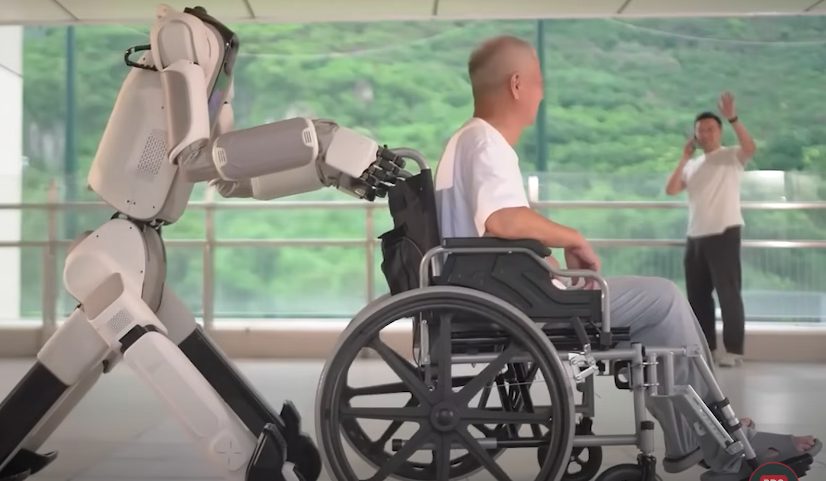
Chia Woo is multimodal, that is, it can know what you require. When an individual attempts to rise out of a chair, Chia Woo goes to assist him or her. It may also integrate into the smart home of Tencent to monitor health services such as pulse and weight. It reports this to the caregivers and the family members. An app allows you to customize such settings as support strength or walking speed. The robot can keep up and fit inside a closet when not in operation. It is a silent, intelligent and ever-available assistant.
PM01: An Intelligent Police Robot in Training
In Shenzhen, the selected robot PM01 is being trained to be a police robot. Its developers at Engine AI are of the opinion that it has embodied intelligence. This implies that the robots do not merely exist, but also to appreciate their environment. The company has collected funds amounting to 140 million dollars and has produced various types of robots such as PM01.
PM01 has height of 4 feet 7 inches (140 centimeters). It possesses 24 degrees of freedom, and this means that it is able to do numerous tasks. It has very strong joints that provide nearly 150 Newton meters of torque. This gives the ability to do them with confidence. The robot is based on Intel N97 and Nvidia Jetson dual chip. It also can be utilized with open-source systems and can be connected to other sensors.
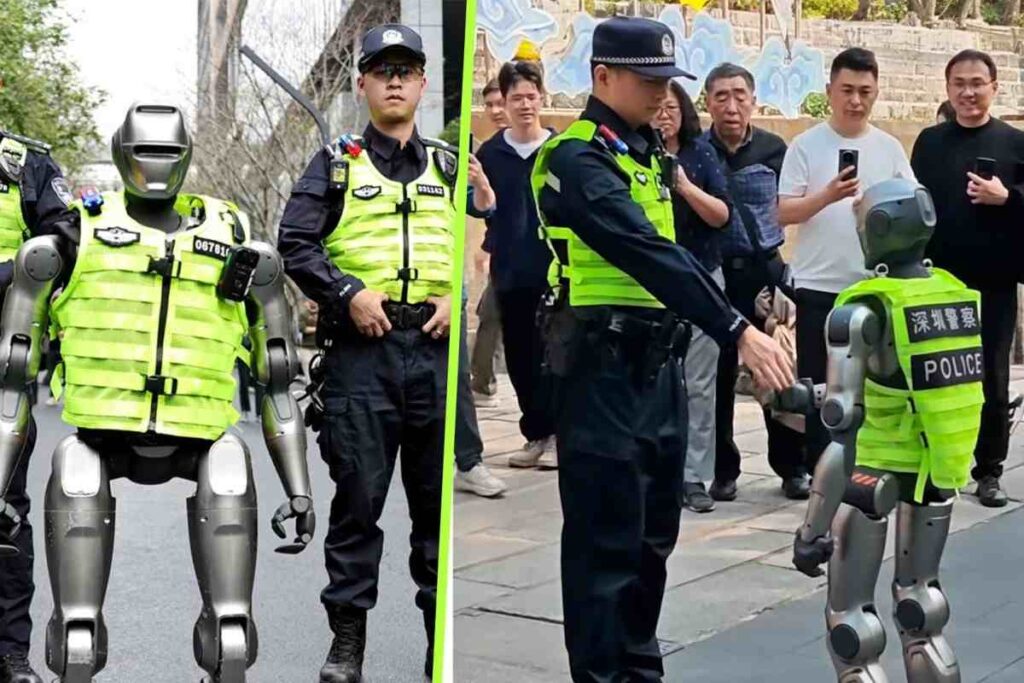
PM01 walks almost like a human. It is capable of rotating 320 degrees which is useful in narrow spaces. It has a complete 3D picture of its surrounding with Lidars and stereo HD cameras. The robot is able to avoid the obstacle, alter the course and maintain balance even when pushed. It lasts approximately two hours, yet its batteries can be replaced fast. The robot presently is PM01 which is a research robot, and it is not planned to be produced on a mass scale now.
Haiwa Robot by Haier: The Supreme Home Help
The new humanoid robot, Haiwa, that Haier proposes, will become a Terminator of the domestic chores. It first appeared at AWE 2025. The concept, which Haiwa is centered around is quite straightforward: a cook, clean, and iron robot. Haiwa is 5 feet 5 inches (165 centimeters) tall, and weighing 154 pounds (70 kilograms). It has 44 degrees of freedom. It is carried on a wheeled base rather than legs, but its arms have the capability to be nearly 6.5 feet (2 meters) in the air.
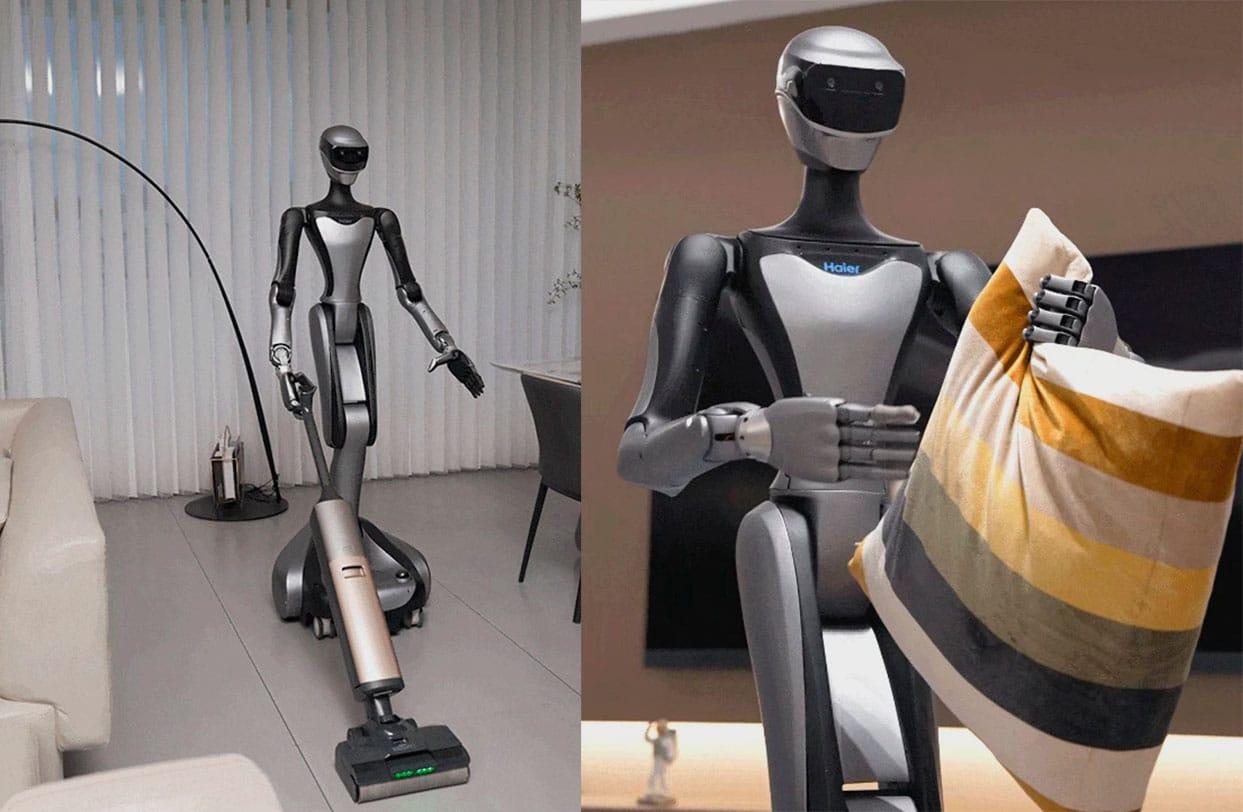
However, now, Haiwa is an experimental remote-controlled vehicle. Nevertheless, Haier engineers will instruct it in numerous activities. China even opens up training data of Haier to other developers. It is a collaborative venture with Robot Era, a startup which did other robot projects. Haiwa is resonant with the smart home systems of Haier. It has the ability to communicate with your washing machine oven and refrigerator. This implies the fact that your robot soon might know your preferences in laundry better than anyone.
The Four-Armed Ice Agebot
A humanoid in China has developed a four-arm robot, the Hindu God Vishnu. This new Ice Aebot measures 5 feet 1 inch (156 centimeters) in height, and is more than 600 pounds (280 kilograms). It possesses a high degree of freedom of 52, which is higher compared to most robots. One arm has a lifting capacity of 6-35 pounds (3 and 16 kilograms). It also is amazingly precise, to less than a thousandth of an inch (0.003 mm).
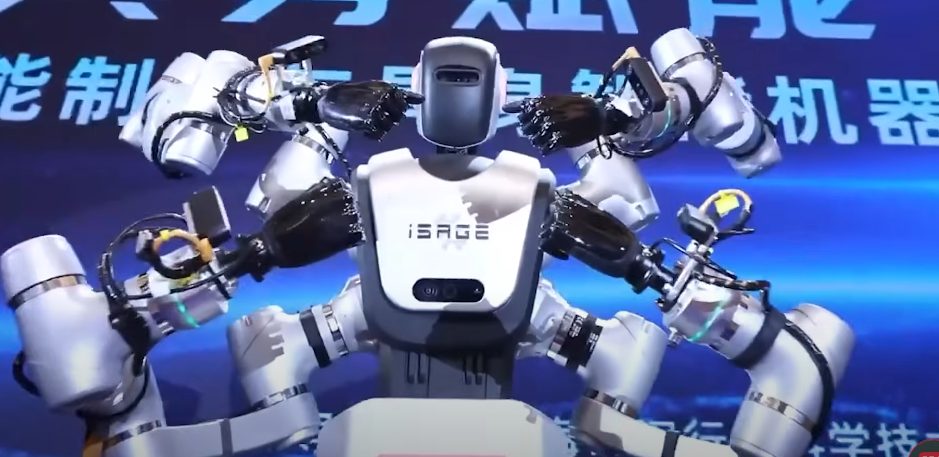
As stated by the developers, this design has doubled the working space of the robot, and the load power has grown by 20 folds. It is capable of working five times as efficiently as systems having less arms. The Ice Abelot is controlled by a special special controller known as the Sage Brain Controller, and by the special operating system known as Sage OS. This system is customized to operate with improved language and vision machine intelligences. It uses various sensors, such as six cameras to provide it with a complete 3D perspective of the environment. This aids the robot to modify its motions in real-time. It is voice controlled, touchscreen controlled or remotely accessible through the cloud. It operates on 220 volts and operates within a range of 50-100 degrees Celsius (10-40 degrees Fahrenheit).
EX Robots: Greater Artists of Realism in Humans
China is also producing robots which are quite resembling to humans. EX Robots relies on a flexible skin and a sophisticated system of facial muscles in order to produce realistic androids. They are more realistic than former models, even to creases on palms and goosebumps. In case you desire a robot copy of yourself, EX Robots will be able to produce it with the help of a 3D scan. It needs 2 to 4 weeks and is estimated to cost between 200,000 and 300000.
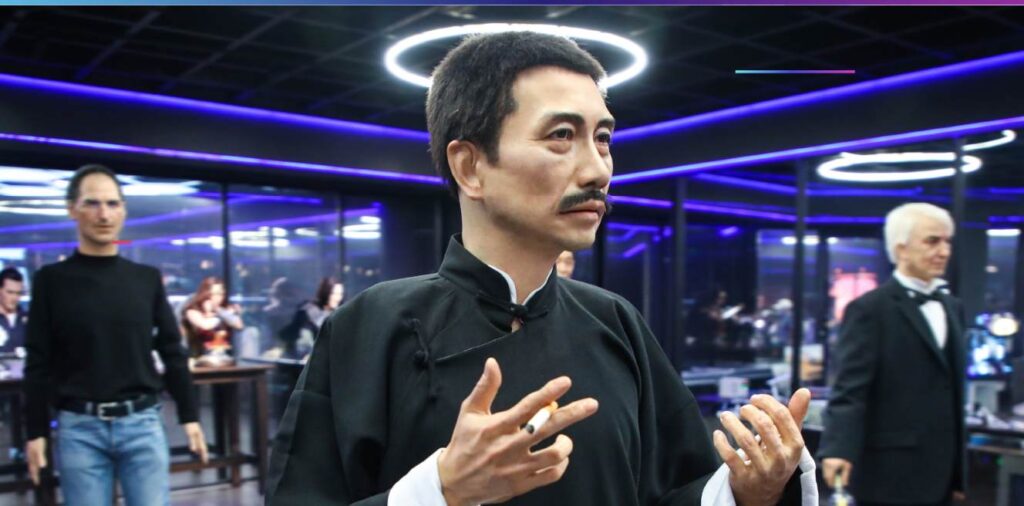
These robots have cameras that are of high resolution to trace the faces. The robots are extremely believable as AI algorithms match the speech with lip movements. These home-based special robots are non-existent. They are primarily applicable in museums and exhibition center. Dozens of these machines move or stand in the visitors of the own museum of EX Robot located in Dalian.
Astribot S1: The Ultimate Home Robot
The Astribot S1 is a pleasure to look at. It is capable of playing with your own cat, making dinner, washing the kitchen and serving drinks. Such a robot resembles a character of a cyberpunk movie. Its speed and accuracy are even more accurate than that of a human. This has been perceived to be unimaginable. Astribot S1 is 5 feet 9 inches (175 centimeters) tall and weighed 100 pounds (45 kilograms). It has 49 degrees of freedom. It has a speed of 32 feet (10 meters) of its arms. All the joints have a maximum load per joint of 80 pounds (36 kilograms). It is impossible that no human being can maintain this rate very long.
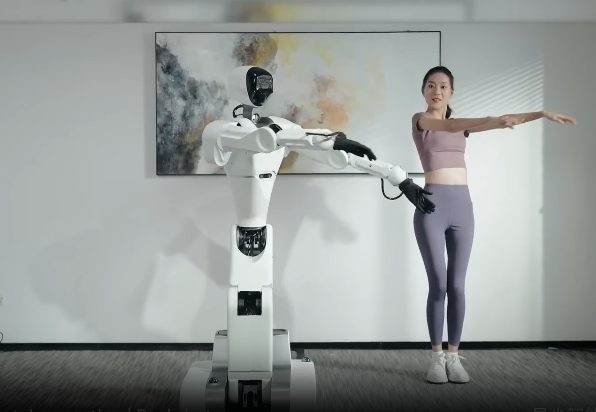
Its motion and balance is controlled by an advanced system. All the components are autonomous modules, yet they are aligned with AI. The robot is immediately able to relocate the weight and maintain balance even under pressure. Astribot learns by watching. Once you demonstrate it, it understands what to do. It is able to combine ingredients, chop vegetables, pour tea or even play an instrument. In one of the videos, it also makes waffles and tosses them deftly after which it plays music. This robot is still in the form of a demo robot. But it could have a tremendous home applications, provided that you can afford it.
R1: Nimble and Affordable Humanoid
This is R1 a humanoid robot that may end up being ubiquitous. It is affordable compared to an expensive computer. R1 should be offered in a variety of colors, similar to popular technological products. It is able to jump, crouch, and rise. R1 is 4 ft 11 in (1.2M) in height and 55 pounds (25kg) in weight. It has 24 degrees of freedom. The legs have six joints to walk and keep balance, arms have five joints and there are some joints in the waist and head.
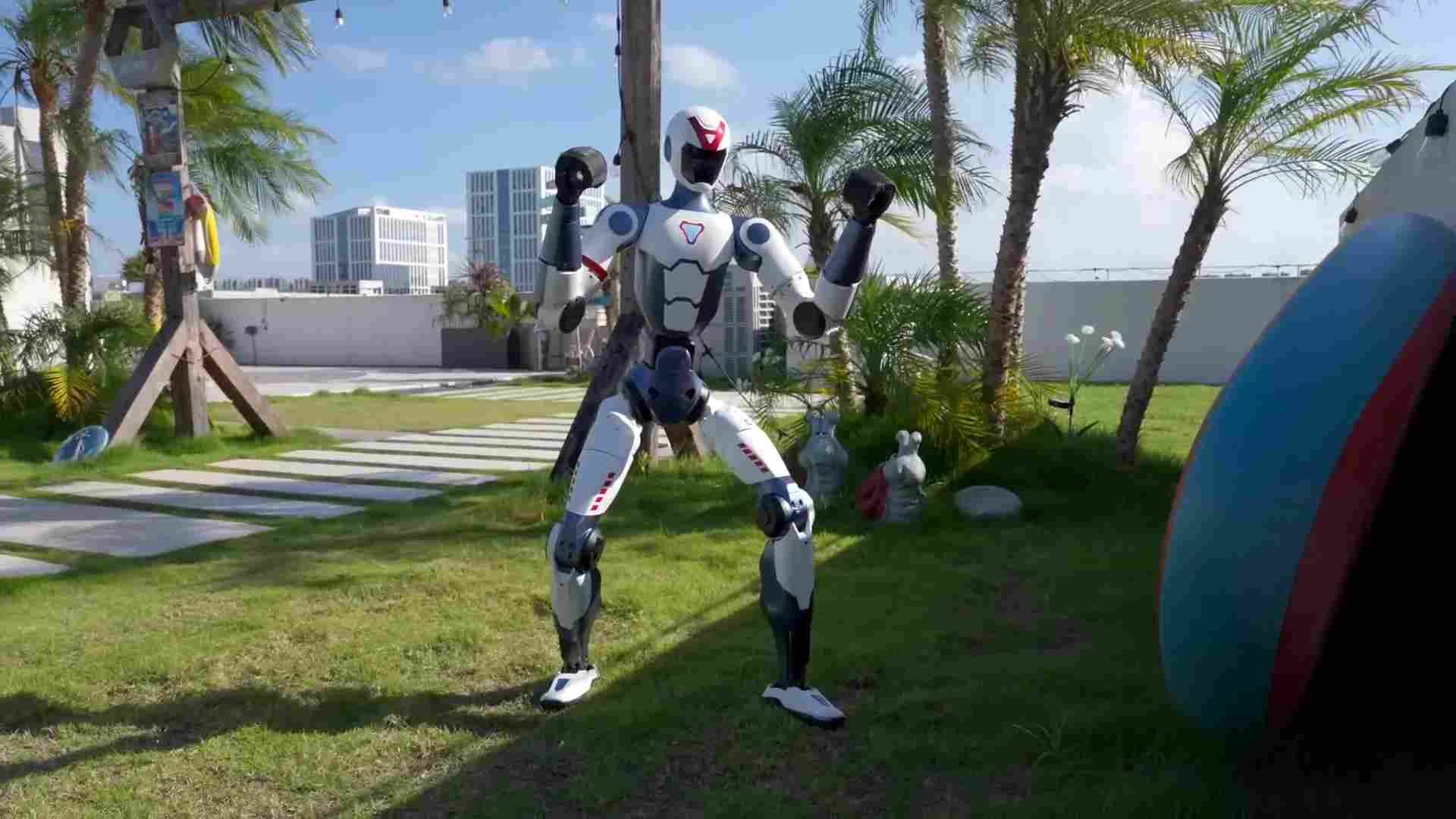
It has a flexible control system. It has open interfaces and compatibility with common robot simulators. The uploaded programs can be posted on the hardware of the robot by researchers. Also movements that were previously costly to purchase are open to experiment by hobbyists. R1 listens to commands by voice, searches images, comprehends what is going on and takes action. It was designed to be the platform used by many other people and not only shows. Training, developing, it and experimenting.
A2 Robot Dog: Strong and Agile
The same company has A2 Robot Dog that is even more impressive than R1. It leaps, runs front-flips and covers 16 feet (5 meters) per second. It can climb slippery slopes. This robot dog has the weight of 220 pounds (100 kilograms) when stationary and 55 pounds (25 kilograms) when moving. This implies that it will be able to maintain a running human with a considerable load.
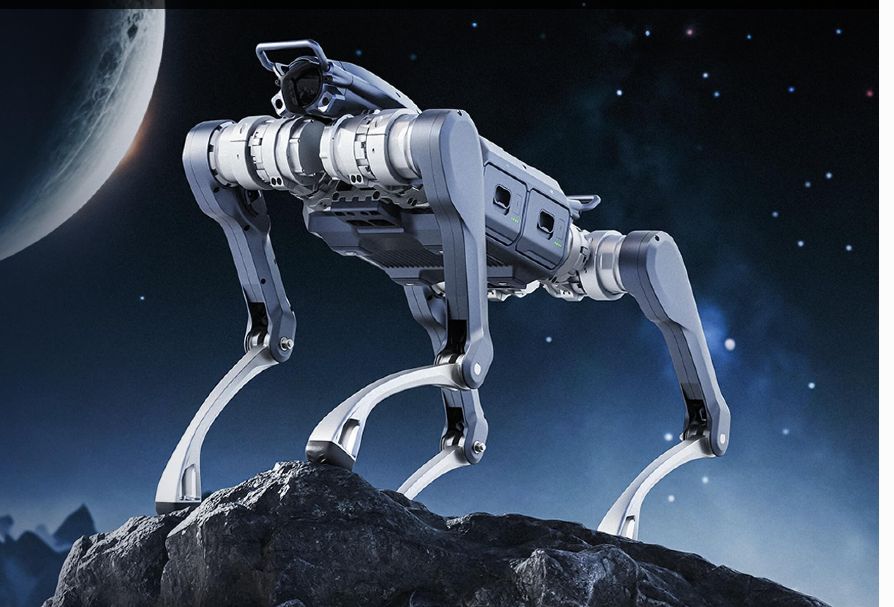
It has a good navigation technology. A2 has a 360 by 90 degree view provided it has a 4D Lidar system. It views all the things with a scope of less than 2 inches (5 centimeters) that have little or no blind spots. The robot creates a map on the fly and visualizes the obstacles in all directions. It is able to go where human beings do not. It has a battery life of 5 hours and can be used up to 3 hours with intense usage. A2 can operate within the range of -4 to 131 degrees Fahrenheit ( -20 to 55 degrees Celsius). Moreover, it is made of undefeated disaster zone and military missions with aircraft-grade aluminum and armor plastic.
Tron from Lynx Dynamics: Stable Security and Rescue
Lynx Dynamics Tron began as an agile security robot. It was able to go patrolling on its own, travel fast on wheels, jump over obstacles and ascend stairs. It would rise up again even when it went down and resume its work. Now, Tron has an arm. This enables it to unlock doors, luggage and other work. The arm is capable of lifting as much as 33 pounds (15 kilograms) regardless of its size. This suffices to many human activities, such as operating a valve or passing on something to a person.
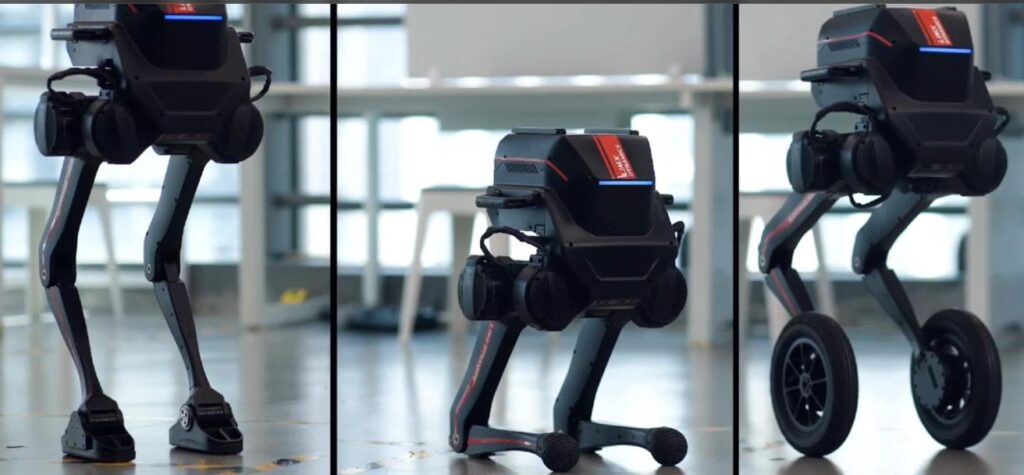
The control system in Tron ensures that the movements on its legs and arms are synchronized. This also maintains the stability of the robot, regardless of whether it abruptly moves or not. It is also waterproof, dustproof and heat and cold resistance. Sale of Tron is already there. This is because it has a Lidar system that provides it with a complete 3D perspective of its environment. This renders it perfect in the logistics, inspections, rescue missions, and the military. Another robot being made by Lynx Dynamics is a humanoid robot; however, Tron is small, strong, and in a not-ready-to-work format which is what stands out.
Humanoid Robots Vision of XPENG
XPENG has a reputation of strange vehicles such as an SUV with a drone passenger or a luxury car with rotor-shaped helicopters. Some years later the company demonstrated a concept of a robot pony in children traveling. It was not a toy this little white dragon was to be. It would identify faces and voices, follow the commands and use its cameras and the Lidar to create maps and evade obstacles. pony might even go on before its master, as it knew where you were going. This project was to design the first child friendly car but apparently it was halted.
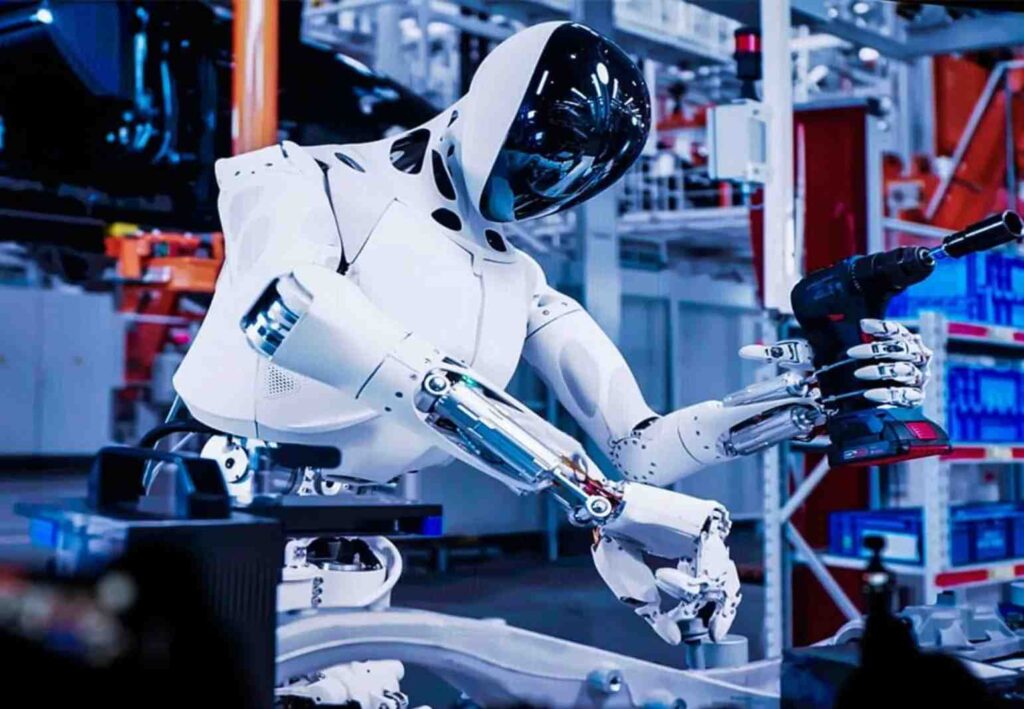
Nevertheless, XPENG now concentrates on robotics called Iron which is a humanoid robot. It was introduced in Auto Shanghai 2025. The height of iron is 5 feet 10 inches (175 centimeters) and the weight of iron is 154 pounds (70 kilograms). It has a total of over 60 joints and 22 degrees of freedom in each arm. It has the capacity of seeing 720 degrees round itself. Iron walks at speed of 4 feet (1.2 meters) per second and picks small things with a human capacity. Similarly, the power of its AI brain is the same as that of a self driving vehicle.
Iron is industry and service oriented. It is currently under training at the Guangzhou factory. It will engage in retail and service employment in future. This robot, in essence incorporates the self-driving car technology in a humanness. Even though a lot about Iron remains the mere theory and the videos are not numerous, its design is amazing. XPENG has a reputation of tremendous design and Iron is no exception.
The Future is Now
Robots emerging in China demonstrate the hint of the future in which machines will enjoy a much more significant role in our lives. These inventions are rapidly moving out of the laboratory and into the living room as we now have technology that simplifies our daily routines, as well as ones that completely redefine how we study and even the mechanisms of defense. With the ever advancing technology, more remarkable inventions in robotics are bound to come.



